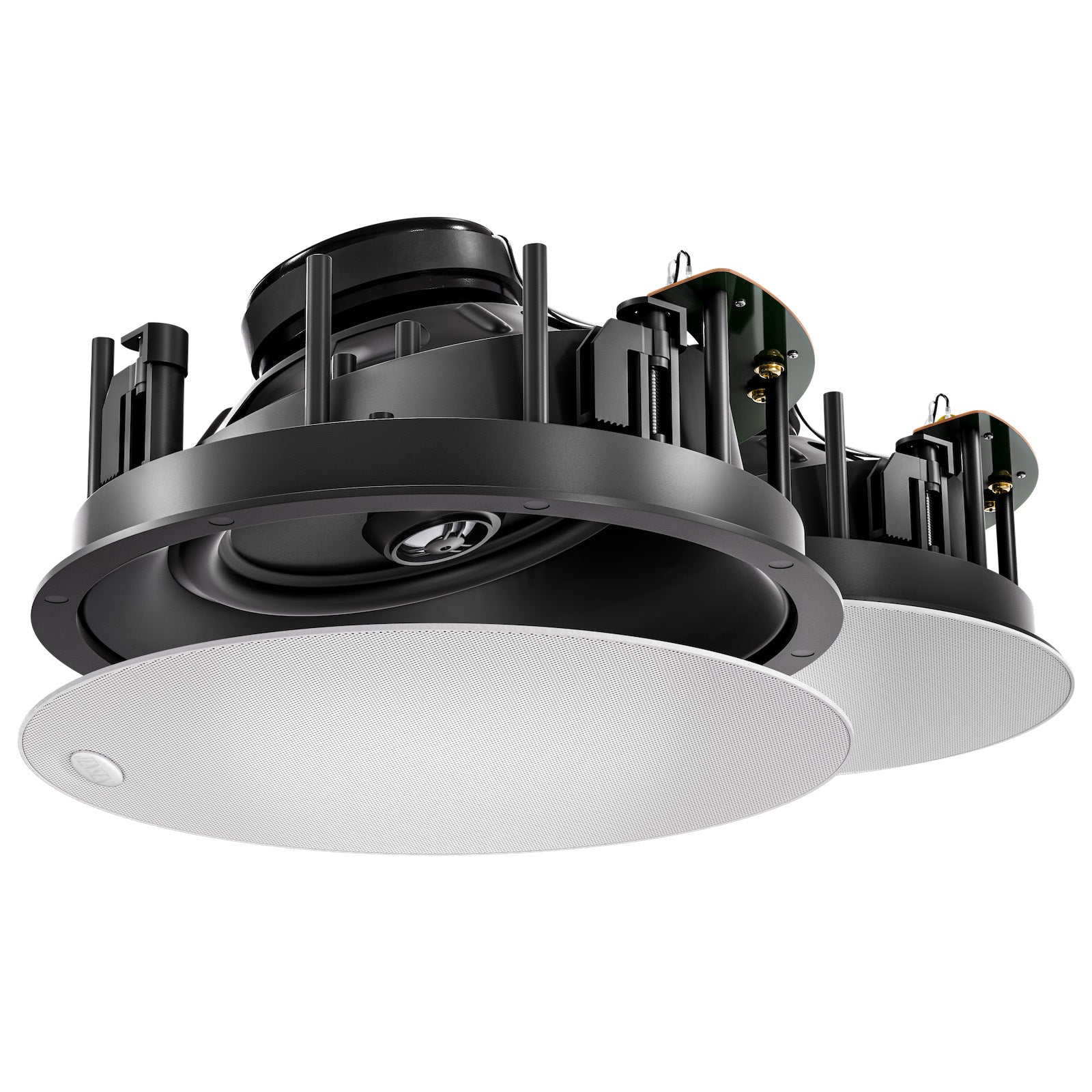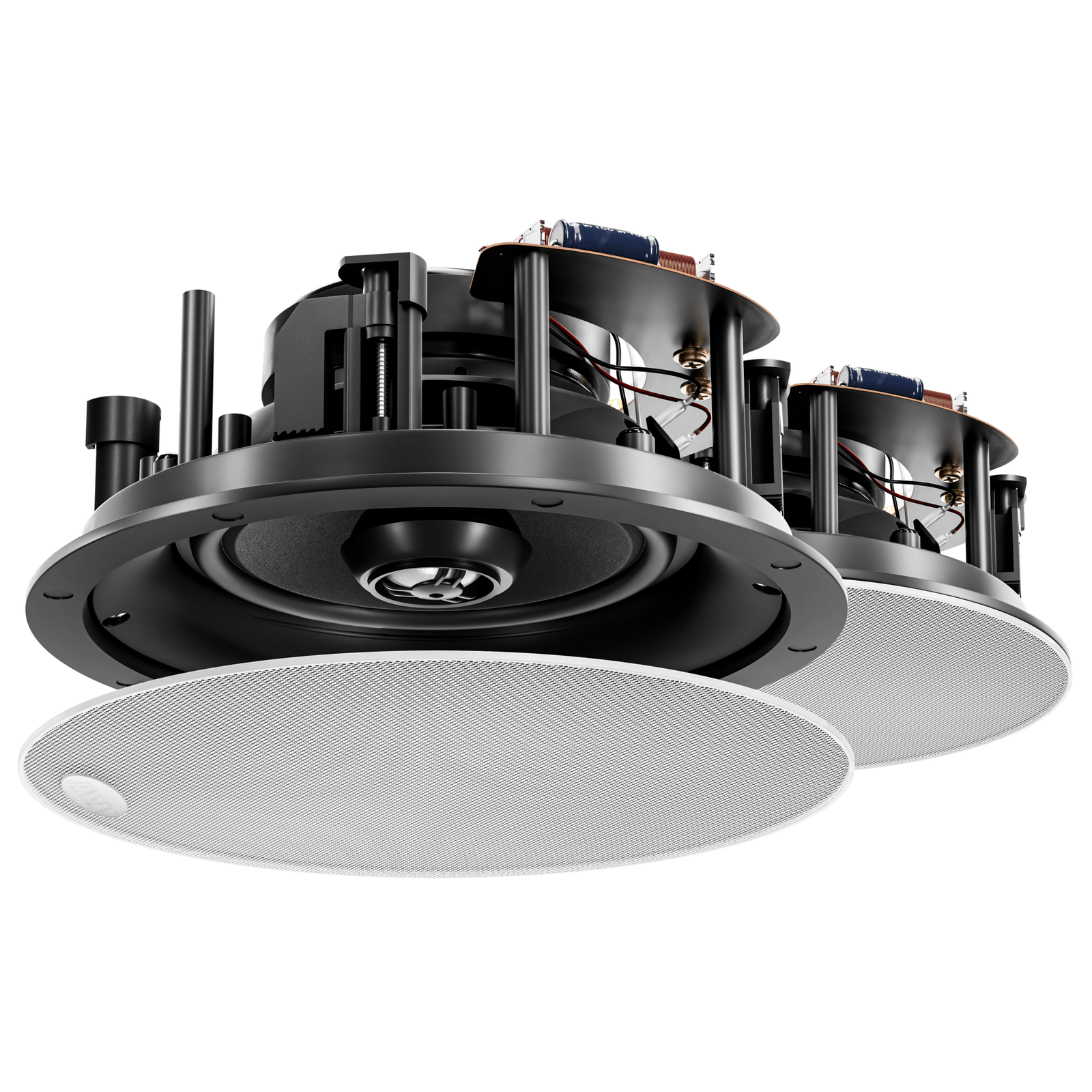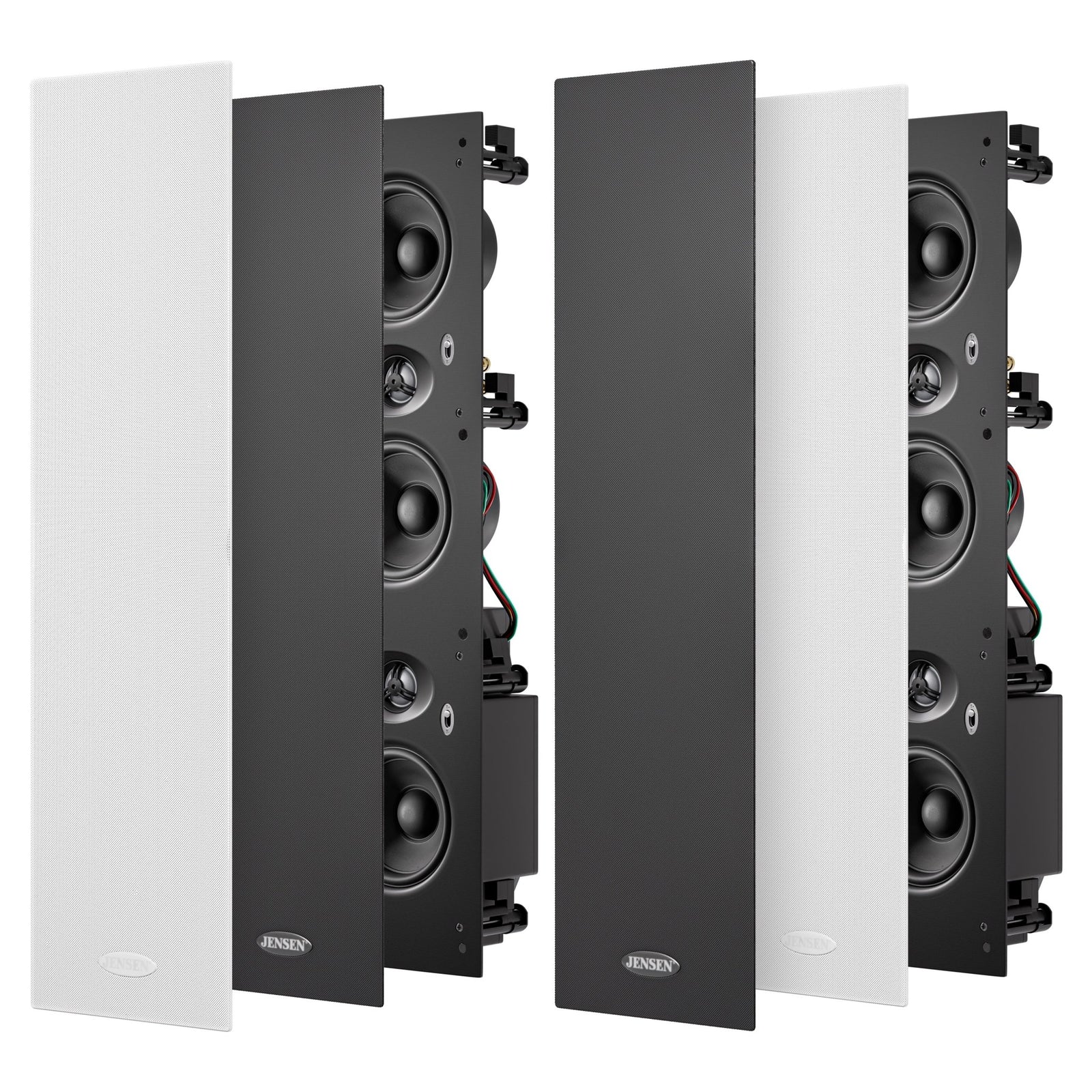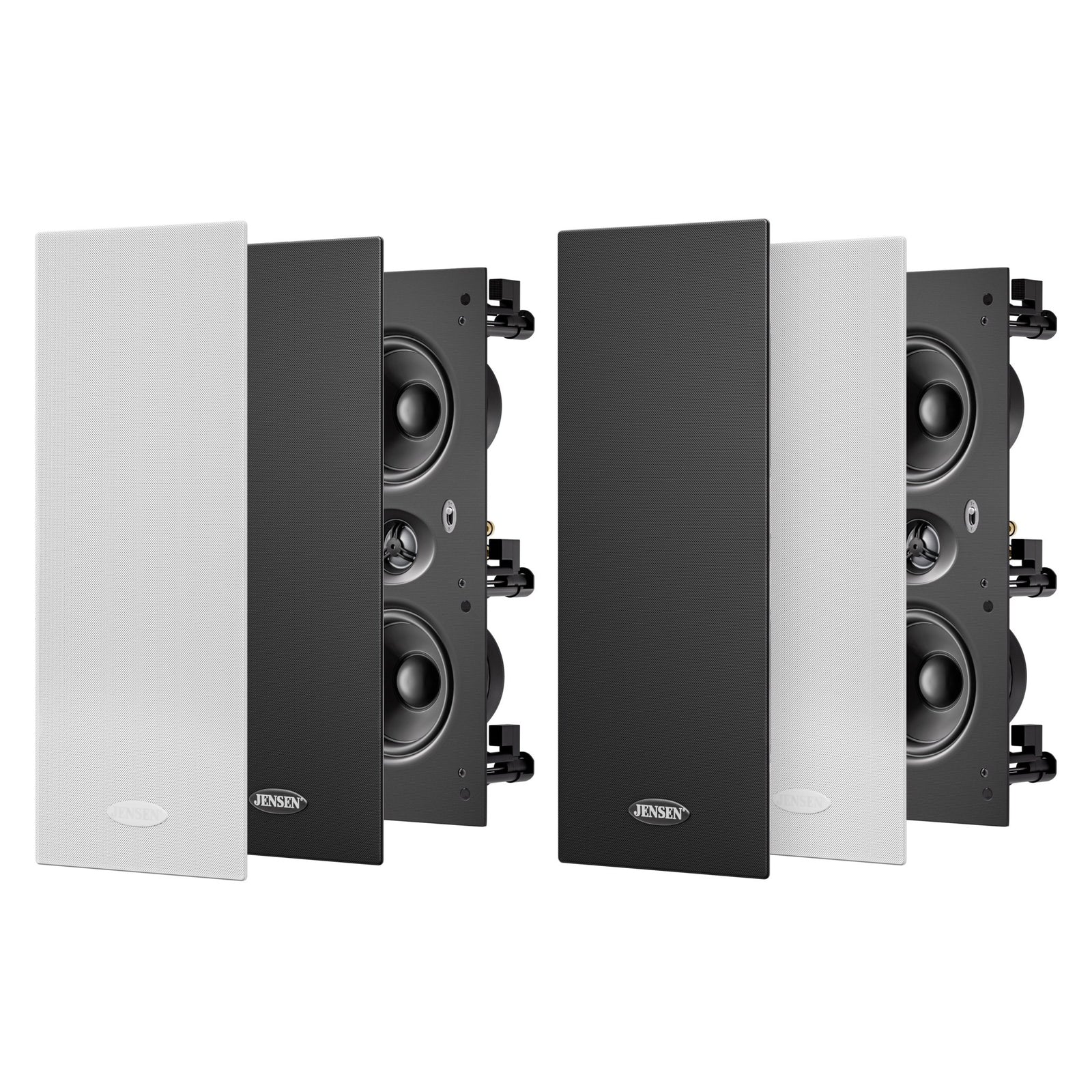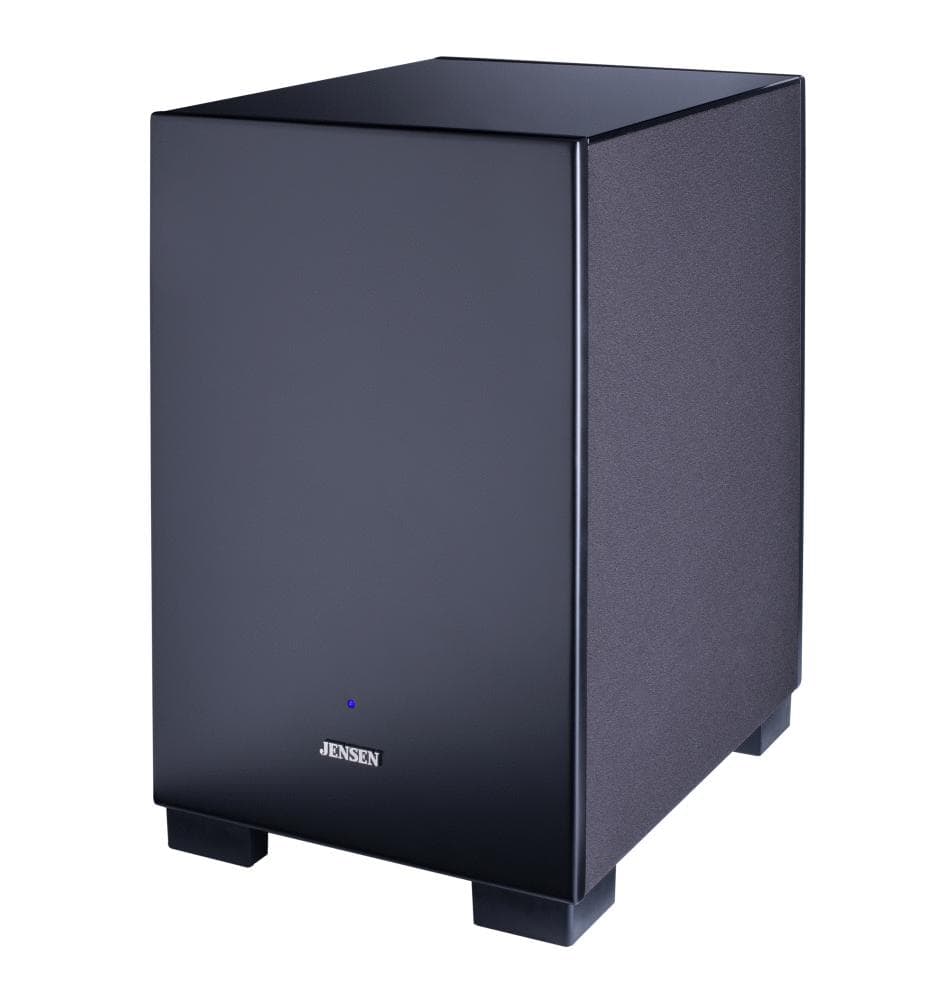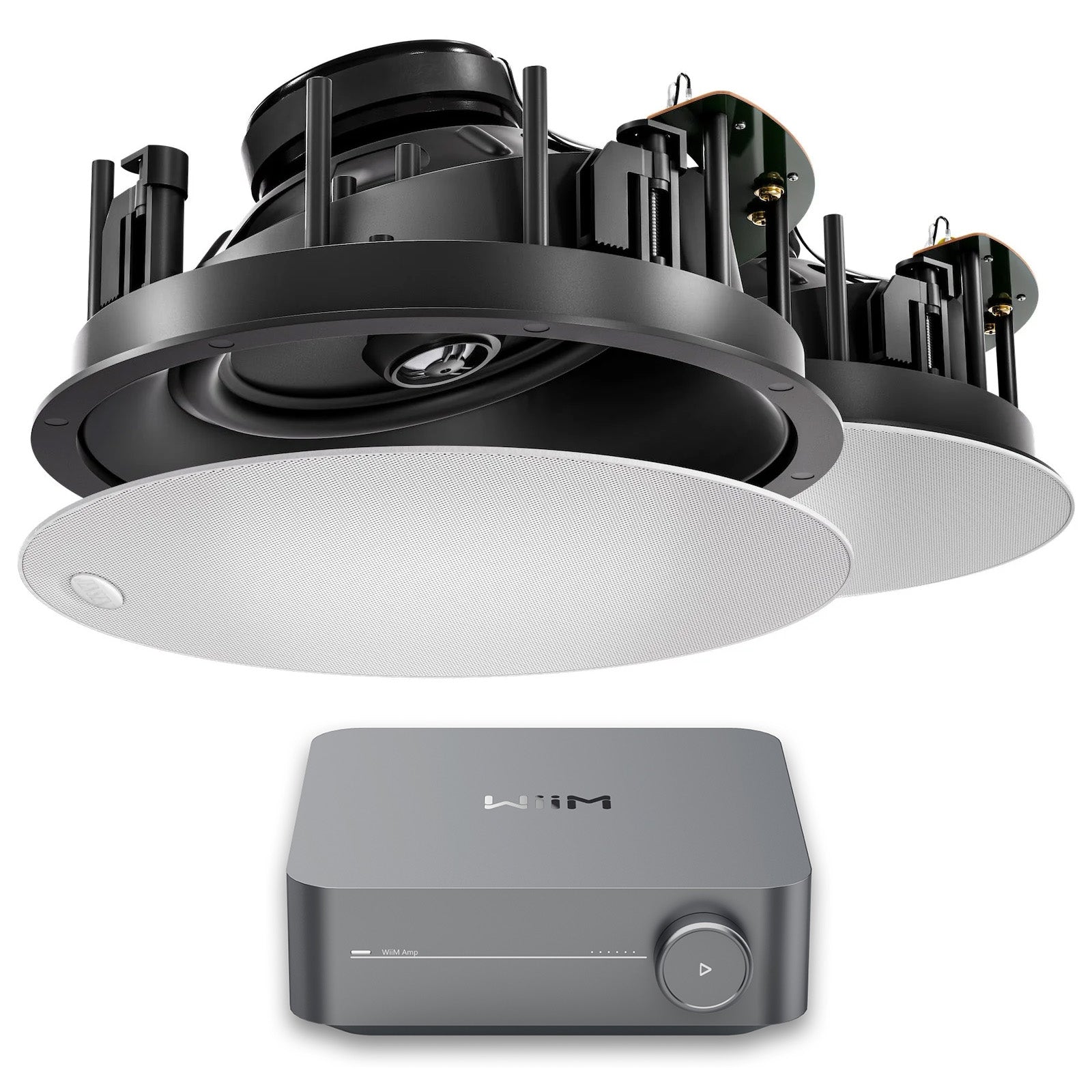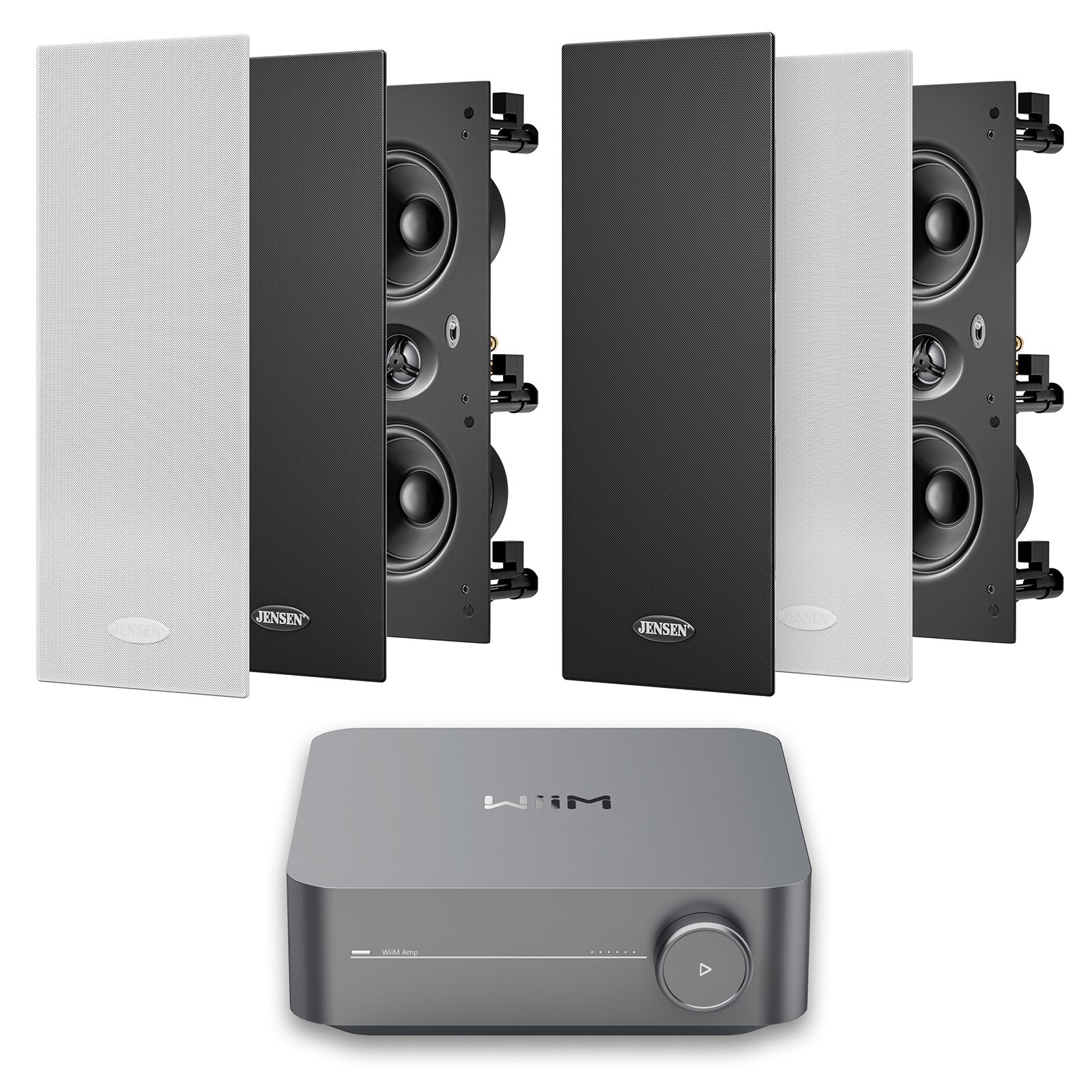HOW TO PLAY MUSIC THROUGH IN-CEILING SPEAKERS

Today I want to share with you everything you need to know to set up your own in-ceiling music system.
If you’re interested in setting up a quality system to play music in your lounge, kitchen, alfresco or wherever… and you definitely want to stick with tidy in-ceiling speakers… this article will clearly explain what you need to know!
(This article assumes you’re keen for music listening, but not fussed with home theatre or TV sound through these speakers. Go here if you want to learn more about setting up a home theatre system.)
Read on to learn…
- How to play music through in-ceiling speakers.
- Are ceiling speakers good for music?
- Every component you need to get the job done.
- Should you get a stereo amplifier or an AV receiver?
- How to add extra music “zones” to your home
Let’s get started!
Contents
- What do I need for an in-ceiling music system?
- How can I add extra in-ceiling music zones to my home?
- How do I make my in-ceiling music system wireless?
What Do I Need For An In-Ceiling Music System?

First let’s clear up what you don’t need to set up an in-ceiling music system:
- A TV. (You can probably connect your speakers to a TV if you want, but you don’t need one for a music-only system.)
- A particular speaker arrangement (like 5.1, etc.). You have more freedom in placing your speakers.
- A surround sound AV receiver (you won’t need this, although below I’ll explain why you might still want to use one).
The next thing I want to clarify is that… in-ceiling speakers are awesome for music!
If you want background music or party music in an area, in-ceiling speakers will give you the best coverage. Quality models will produce a surprising bass response, too.
If you want “dedicated” listening for your music (imagine sitting down to intentionally enjoy a new album) in-ceiling speakers are still a great choice… as long as they are directional.
(Directional means they don’t just fire straight down from the ceiling — they are tilted so you can point them towards a seating area. This gives you good audio imaging.)
Now that you understand that, let’s get into the three main things you need: A pair of in-ceiling speakers (possibly 2 pairs — more on that in a sec), an amplifier to power them, and a music source.
The Speakers
This one is obvious. You will need some in-ceiling speakers.
I mentioned this above: You can get directional in-ceiling speakers or downward firing ones.
The downward firing ones are far more common and most models you find are actually for “commercial” use. Think hotel lobbies, cafes, elevators and gyms.
While you can find quality models with good audio performance, you have to be careful because commercial models usually don’t sound nearly as good.
The directional models are almost always meant for home use. When you install these models you can point the built-in tilt towards your seating area. This will give you WAY better stereo image.
A quality set of directional in-ceiling speakers will sound as good as a set of dedicated box speakers… and you won’t ever have to look at it or clean around it!
What about in-ceiling speaker placement for background music?
It’s a lot more flexible than speaker placement for home theatre.
If you plan to use them mostly for background listening and party music, you should evenly space them out. That will help them look tidy on the ceiling as well.
(Note: Directional in-ceiling speakers cover the whole area underneath the speaker perfectly too.)
If you want a dedicated listening setup (where you know which space most of the listening will occur), try to install them slightly back from that space with the tilt pointing towards it. Here’s an example:

Oh, and here’s a note on using more than two speakers for a music zone…
If you have a very large area and want to get more speaker coverage, you can run them in series or parallel. All that means is you’ll power more than 2 speakers from one stereo amp.
Usually that means 4 speakers connected to 2 pairs of amplifier terminals.
This is doable… IF your amplifier has enough power to do the job, and your speakers have the right impedance. But understand that the performance of the speakers won’t be as good as running only a pair of speakers from the same amp.
Get in touch if you want to learn more.
The Amplifier
What do in-ceiling speakers connect to?
At the very least, they connect to an amplifier. Without an amp, there’s no power to drive them.
One benefit to going with a music only system — and not worrying about theatre audio — is you don’t have to get an AV receiver. A two-channel stereo integrated amplifier will do (usually just called a “stereo amp”).
But you may still want to use an AV receiver. Here’s why:
- They have tons of inputs.
- Most new ones have Bluetooth and wireless facility on board.
- 7.1 and above receivers can be used to power an extra zone (so you can have two rooms with two speakers each and control them separately).
- They always have high power.
Here’s what I recommend…
(1) Always go with something that has Wi Fi control built in (like the entire Denon AVR range), and
(2) Even if you only want one zone, choose an AV receiver. Just make your selection from a brand with a great track record.
Whichever type of amp you go with, make sure it has the inputs you need and has enough power for the performance you want.
With inputs, you may need to look out for:
- Bluetooth or WiFi are on board,
- There’s a “phono input” if you need it for your turntable,
- There’s an “optical” input for a TV (or other device), and
- There’s analog RCA or “Aux” jack inputs if you need them.
For an explanation of how to choose amp power, take a look at What AV Receiver Should I Buy For Home Theatre and select the section on power from the Contents.
The media source
If you’re not sure what a “media source” is, it’s the place your music comes from.
Think…
- Vinyl records (turntable)
- CD
- AM/FM/DAB radio
- Digital files (like MP3 or FLAC)
- Internet streaming (Spotify, Apple Music, etc.)
- Your mobile device
…etc. So in addition to the speakers and amplifier, you need at least one of these.
You probably already know which ones you want. If you’re not sure, I recommend you plan on using whatever you’re used to.
For most that will be a music streaming service. Wi-Fi control is the best way to use those, just make sure your amplifier or music source is compatible with YOUR music subscription service.
Now, you need to have the device that plays your media…
For example if you go with an AV receiver like I recommended, you should have DAB radio, Internet radio, Bluetooth and WiFi already. If not, you can buy an external streaming device.
If you run a basic stereo amp with no built-in sources, the cheap-and-simple solution is to get a Bluetooth receiver and plug it in. Then just stream via Bluetooth from your mobile devices. (There are downsides to this though — learn more here.)
Just make sure you have some device that can play what you need!
Note: In addition to the “big three” above…
You may need a few cables to get it all running.
You’ll need speaker cablesgoing from the amp to each speaker, power cables (these come with everything), and “interconnects” (like optical cables or RCA).
What you need depends on the products you choose!
How Can I Add Extra In-Ceiling Music Zones To My Home?

If you want more than one room of your house to have music, and you want all the speakers to be nearly-invisible in the ceiling…
Here’s what you need to do.
Either…
(1) Use an AV receiver with enough outputs (7.1 channel receiver for 2 zones, 9.1 channel receiver for 3 zones), or
(2) Use multiple, separate stereo amps for each zone.
The more compact and simple option is 1. Get an AV receiver that can power multiple zones, then run speaker cables from that amp to each speaker.
If you go with an AV receiver that has Bluetooth and WiFi built-in, your home music ecosystem will be streamlined. Once you have everything in place you’ll be able to whip out your mobile device and quickly change the music, or volume, in any of your zones.
Read the next section to better understand wireless control for your music system.
How Do I Make My In-Ceiling Music System Wireless?

There are two main ways to set up your in-ceiling music system for wireless.
(1) Use an amp with wireless built-in to power your speakers, or
(2) Add a wireless streaming deviceto your system.
If you read the content above, you already know that most AV receivers have wireless facility on board. (Bluetooth and WiFi.)
That’s why I recommend that solution. It ticks all the boxes in one unit.
Streaming devices on the other hand are usually small and can be fairly expensive. If you’re investing heavily in a high fidelity audio system, sometimes these streaming devices are better. That’s because they have dedicated digital outputs or better digital processing than AV receivers.
But the WiFi digital streaming performance of a receiver is still excellent, and any differences from that component alone are difficult to hear.
Now, Bluetooth and WiFi are different “wireless technologies.” They each have upsides and downsides. I strongly recommend you plan on using WiFi — to learn why, read this article.
To actually get the wireless control going on your in-ceiling music system you might need to download a streaming app (like Denon HEOS) and create an account. You will also need to start up your receiver and go through the network setup (it’s quick and easy).
Once you set the app and receiver up, you’ll see all the zones on your network.
You’ll be able to touch a zone and play…
- From a digital library on another network device (MP3, FLAC, WAV, etc.)
- Streaming services like Spotify, Tidal, Deezer (as long as the app you’re using supports it)
- Radio stations (internet radio is the best bet since most stations stream online), and
- Any devices that are plugged into the receiver will be selectable as well.
As someone who thinks a lot of “innovative consumer tech” is unnecessary, I can tell you wireless music control is well worth it!
Thanks for reading! If you have any other questions, contact us here.
To learn more, check out these related articles…
The Simple Guide To Bluetooth And Wifi
Planning To Install In-wall Or In-ceiling Speakers
The Guide To In-ceiling Surround Sound Speakers
